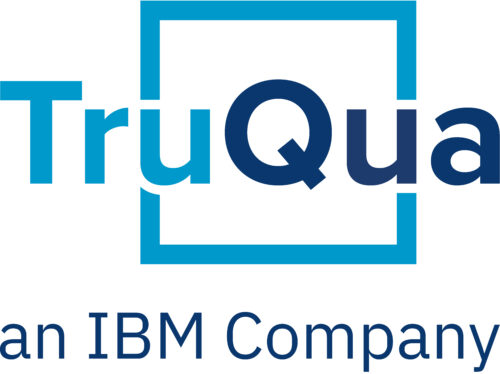SAP S/4HANA Finance
Filter By
Browse By
- SAP Analytics and AI
- SAP Application Development and Integration
- All SAP Application Development and Integration
- SAP ABAP
- SAP ABAP Development Tools
- SAP ABAP Test Cockpit
- SAP API Management
- SAP BAPI
- SAP Basis
- SAP BRF
- SAP Business Application Studio
- SAP CMS
- SAP Design Studio
- SAP Development Tools
- SAP DevOps
- SAP EAI
- SAP EDI
- SAP Extension Suite
- SAP Fiori
- SAP Fiori Elements
- SAP Integration Suite
- SAP Low Code Application Development
- SAP Low Code Automation
- SAP Netweaver
- SAP Release Management
- SAP UI5
- SAP Web Application Server
- SAP Web IDE
- SAP Business Process Management
- SAP Center of Excellence
- SAP CIO
- SAP Customer Experience
- SAP Data and Data Management
- All SAP Data and Data Management
- SAP BW
- SAP BW/4HANA
- SAP Crystal Reporting
- SAP Data Archiving
- SAP Data Center
- SAP Data Governance
- SAP Data Integration
- SAP Data Migration
- SAP Data Quality
- SAP Data Services
- SAP Data Strategy
- SAP Data Visualization
- SAP Data Warehouse Cloud
- SAP DMS
- SAP Document Control
- SAP EIM
- SAP ETL
- SAP ETL Tools
- SAP HANA
- SAP HANA Administration
- SAP HANA Deployment Infrastructure
- SAP HANA Studio
- SAP Master Data
- SAP Master Data Governance
- SAP MDM
- SAP Enterprise Architect
- SAP Enterprise Asset Management
- SAP ERP
- SAP Finance
- All SAP Finance
- SAP Accounting
- SAP AR AP
- SAP Asset Accounting
- SAP Billing Systems
- SAP BPC
- SAP BRIM
- SAP Cash Management
- SAP Central Finance
- SAP Controlling
- SAP COPA
- SAP Cost Center Accounting
- SAP e-invoicing
- SAP FICO
- SAP Finance Automation
- SAP Financial Closing Cockpit
- SAP Financial Consolidation
- SAP Financial Planning
- SAP FX Risk
- SAP General Ledger
- SAP Global Tax Management
- SAP Hyperion
- SAP Order to Cash
- SAP Payment Processing
- SAP Profitability Analysis
- SAP Rebate Management
- SAP S/4HANA Finance
- SAP Universal Journal
- SAP Governance Risk and Compliance
- SAP Human Capital Management
- SAP Intelligent Technologies
- SAP Platform and Technology
- All SAP Platform and Technology
- SAP Business Technology Platform
- SAP Cloud Connector
- SAP Cloud Integration Platform
- SAP Cloud Migration
- SAP Cloud Platform
- SAP Cloud Providers
- SAP Cloud Strategy
- SAP Container Platform
- SAP Digital Asset Management
- SAP Digital Integration Hub
- SAP Digital Signature
- SAP HANA Enterprise Cloud
- SAP HEC
- SAP Hyperscalers
- SAP Infrastructure
- SAP Messaging
- SAP Smart Forms
- SAP Quality and Testing
- SAP Security
- SAP Spend Management
- SAP Supply Chain Management
- All SAP Supply Chain Management
- SAP APO
- SAP Asset Management
- SAP Business Network
- SAP Digital Manufacturing Cloud
- SAP Digital Twin
- SAP EWM
- SAP IBP
- SAP Inventory Management
- SAP Label Printing
- SAP Logistics
- SAP Manufacturing
- SAP Manufacturing Automation
- SAP MES
- SAP MII
- SAP MM
- SAP MRO
- SAP MRP
- SAP Order Management
- SAP Plant Maintenance
- SAP PLM
- SAP Production Planning
- SAP S&OP
- SAP SD
- SAP SPM
- SAP Supply Chain Planning
- SAP Track and Trace
- SAP Transportation Management
- SAP System Administration
What is SAP S/4HANA Finance?
Initially released in 2014, SAP S/4HANA Finance is the core financial solution for SAP customers, designed to leverage the SAP Fiori user interface and in-memory computing power of HANA. Previously referred to as SAP Simple Finance and SAP ERP Financials, SAP S/4HANA Finance provides multiple innovations, such as the Universal Journal single source of truth, allowing organizations to streamline financial processes, with real-time updates and reporting, across a simplified data model for storing financial and managerial accounting information.
What is SAP S/4HANA Finance?
Initially released in 2014, SAP S/4HANA Finance is the core financial solution for SAP customers, designed to leverage the SAP Fiori user interface and in-memory computing power of HANA. Previously referred to as SAP Simple Finance and SAP ERP Financials, SAP S/4HANA Finance provides multiple innovations, such as the Universal Journal single source of truth, allowing organizations to streamline financial processes, with real-time updates and reporting, across a simplified data model for storing financial and managerial accounting information.
Many SAP ERP customers utilize SAP S/4HANA to manage core business functions that enable timely and accurate financial operations and reporting, such as accounting and finance, financial planning and analysis, financial risk management, and risk and compliance management. SAP S/4HANA Finance is a powerful and versatile system that can be deployed in multiple ways to suit your organization’s needs.
Key features of SAP S/4HANA Finance include:
- Unified real-time data model for storing all finance-related information
- Enhanced financial closing capability
- Centralization of account payables and account receivables
- Predictive accounting
- Embedded analytics
Key Considerations for SAPinsiders
Start thinking about your SAP S/4HANA Finance journey now. In 2027, SAP expects to cease all new development for the core ERP and sunset support, requiring organizations to transition to S/4HANA Finance. Organizations that have yet to make the move to SAP S/4HANA Finance need to begin planning and develop a viable roadmap or risk falling behind their peers.
Reduce compliance risks by properly archiving financial information prior to SAP S/4HANA Finance transition. The size of your financial database directly impacts both the complexity and cost, which often leads to long timelines for moving everything over as well potential compliance risks that need addressing before they can be done. Achieve a high level of data protection by archiving critical financial information before it impacts performance, cost, or availability. Evaluate requirements for data cleanup to transfer historical data securely.
Leverage Central Finance in transition to SAP S/4HANA Finance as an opportunity to optimize core finance functions.Consolidating data from multiple sources and creating a single summary of the information is difficult. Central Finance can make this process easier, as it simplifies everything into one easily accessible place for greater visibility. Organizations can empower SAP S/4HANA Finance modules, applications, and extensions end-to-end with more accessible financial information.
109 results
-

Technologies and Strategies Driving Trends in Finance
Reading time: 2 mins
Finance and accounting serve as the centerpieces of a company’s ERP strategy. SAPinsider’s research consistently shows that new upgrades and innovations related to SAP technology — whether related to SAP S/4HANA or automation — start with finance. Automation has been identified as a priority for the finance function. A majority of finance and accounting survey respondents — 87% — said in the latter half…
-

- SAP S/4HANA Finance
 Premium
Premium
Simplifying SAP S/4HANA across complex banking needs
Global banking connectivity can be one of the most complex components of an ERP project. With every bank requiring their own specific format structures which can even vary between branches at the same bank, IT and SI integration team have a significant manual build as part of the project. Learn how a bank connectivity platform…
-

- SAP S/4HANA Finance
 Premium
Premium
Unearth the hidden secrets of parallel currencies in SAP ERP Financials
Functional currency. Group currency. Hard currency. Index currency. Controlling area currency. Ledger currency. Global currency. Add to these the complexities associated with parallel valuations — such as legal valuation and group valuation — and it is easy to see why currencies are one of the most misunderstood (but also most powerful) features of SAP ERP…
-
-

- SAP S/4HANA Finance
 Premium
Premium
Migrate to SAP S/4HANA Finance from Classic to SAP S/4HANA directly in 1-step or 2-steps via New G/L
If you are a Classic Ledger setup and have decided to migrate to SAP S/4HANA, one of the most important decisions you must make is whether to migrate to SAP S/4HANA Finance directly in one-step OR in two-steps via SAP General Ledger (formerly known as New G/L). Now, both the options are available. Both the…
-

- SAP S/4HANA Finance
 Premium
Premium
Strategic and technical considerations for SAP S/4HANA Finance transition
As a key stakeholder, you want to transition from the classic General Ledger to the latest and greatest and there are many options: SAP General Ledger, SAP S/4HANA Finance, Central Finance, and more. Attend this in-depth session to gain a deep understanding of various strategic and technical considerations you must be ready with before you…
-

- SAP S/4HANA Finance
 Premium
Premium
SAP S/4HANA Finance: Revolutionizing and modernizing your financial processes
Although SAP S/4HANA has been available for over five years and been deployed at thousands of customer sites, not everyone is aware of all the potential benefits that it brings to finance departments that are currently using SAP ECC. There is much to learn and many questions to be answered. Attend this session for an…
-

- SAP S/4HANA Finance
 Premium
Premium
How Finance Departments can Benefit by Moving from SAP ECC to SAP S/4HANA
Although SAP S/4HANA has been available for over five years and been deployed at thousands of customer sites, not everyone is aware of all the potential benefits that it brings to finance departments that are currently using SAP ECC. There is much to learn and many questions to be answered. Attend this session for an…
-
-

- SAP S/4HANA Finance
 Premium
Premium
Keynote | The State of the Market of Financial Management
Join this session to hear the latest results and analysis from WISPub’s Head of Research on the state of the financial management market and SAP's feedback. Learn from Martin Naraschewski and Michel Haesendonckx about how SAP innovations are helping customers transform their finance functions – and how the powerful insights finance can provide can help…
-

- SAP S/4HANA Finance
 Premium
Premium
How does SAP HANA Revolutionize Finance?
High volumes of data have overwhelmed Finance teams with more information than they utilize. In this session, you’ll learn how you can leverage your investment in SAP technologies to expedite your Corporate Performance Management (CPM) processes — close, consolidation, planning, analysis, reporting, disclosure, and compliance. Join this session to: Learn how the two platforms work…...…
-

Position Your Business to React and Adapt to Any New Regulations with Ease
Reading time: 11 mins
In the increasingly complex and regulated business landscape, compliance is a top concern for companies of every size, in every industry. In the past few years, major standards have appeared in two finance and accounting compliance areas that cut across industries. First, revenue recognition standards provide new guidance on one of the most important measures…
Featured Insiders
-

Matt Montes
SAP Financials Senior Manager, TruQua, an IBM Company
-

Rohana Gunawardena
Director - SAP Practice, Exium Inc.
-

Aric Quinones
Managing Director, Protiviti
Become a Member
Unlimited access to thousands of resources for SAP-specific expertise that can only be found here.
Upcoming Events
-

Register Now: SAPinsider Technovation Summit Barcelona: AI + SAP BTP
May 14 - 15, 2024
Barcelona, Spain
View Event
Related Vendors
Your request has been successfully sent

